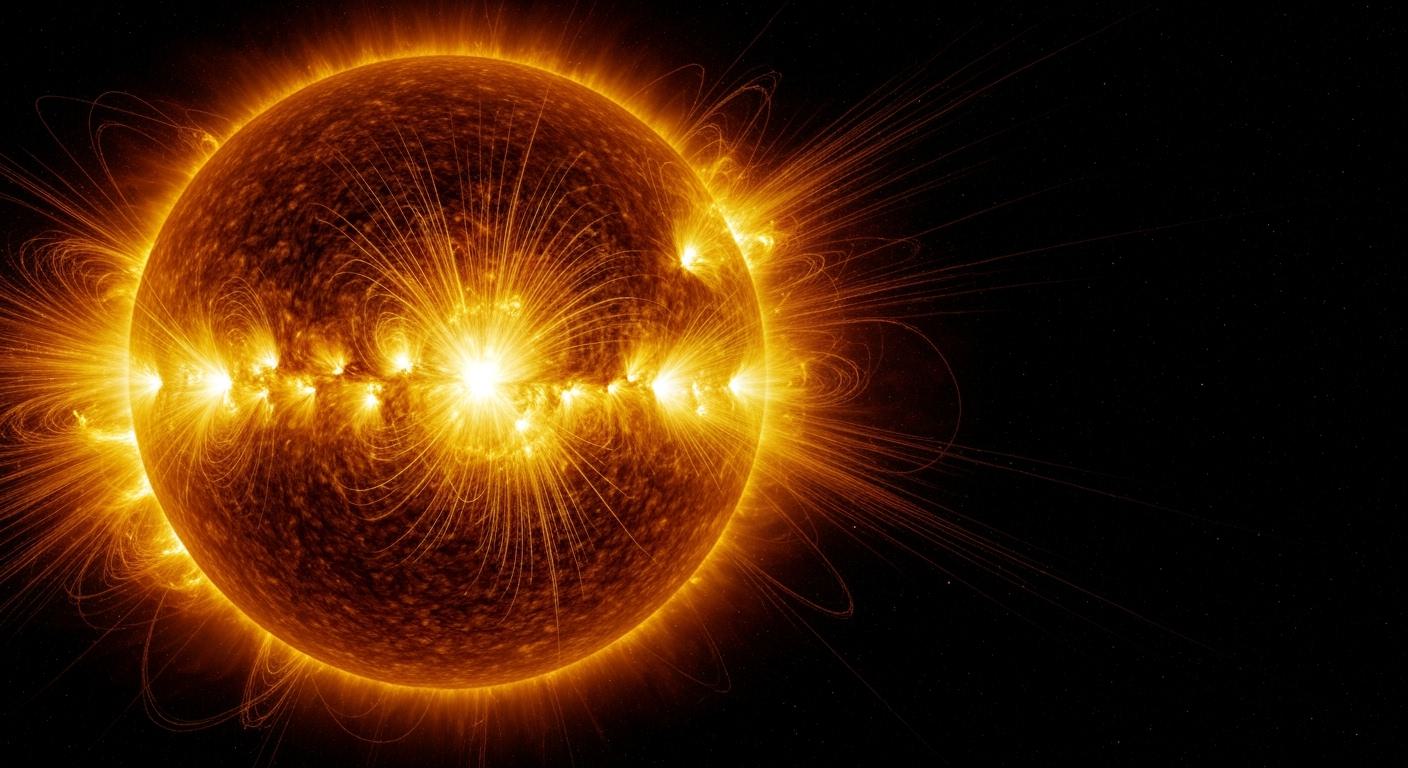While scientists have long struggled to predict dangerous solar storms, a groundbreaking AI model called Surya is changing the game. This open-source creation from NASA and IBM processes nine years of high-resolution solar imagery to forecast potentially devastating solar flares and coronal mass ejections up to two hours before they occur.
Think of Surya as a cosmic weather forecaster, but instead of predicting rain, it warns us about massive bursts of energy from our sun that could wreak havoc on Earth. These solar tantrums aren’t just celestial light shows – they can knock out satellites, disrupt GPS navigation, and even cause widespread power outages. In fact, experts estimate that a major solar storm could trigger up to $2.4 trillion in global economic losses over five years.
Solar storms are nature’s ultimate power outage, capable of disrupting modern life and costing trillions in economic damage.
What makes Surya special is its ability to spot trouble brewing on the sun’s surface with unprecedented accuracy. By analyzing images from NASA’s Solar Dynamics Observatory satellite, it’s 16% better at classifying solar flares than previous methods. The satellite captures detailed solar images every 12 seconds to provide continuous monitoring. It’s like having a tireless astronomer watching the sun 24/7, but one who can process information faster than any human could dream of. The model builds upon IBM’s success with their earlier Prithvi weather model, designed for climate predictions.
The best part? Surya is freely available to researchers worldwide through platforms like GitHub and Hugging Face. Scientists can use, improve, and build upon its capabilities, creating a collaborative approach to protecting our technology-dependent world from solar surprises. It’s part of a larger effort to democratize space weather forecasting tools, making them accessible to researchers everywhere.
For those of us on Earth, Surya’s predictions mean better preparation for solar storms that could affect our daily lives. Whether you’re an astronaut worried about radiation exposure, an airline relying on navigation systems, or someone who simply wants their Netflix to keep streaming without interruption, this AI model represents a significant step forward in our ability to defend against nature’s most powerful light show.







